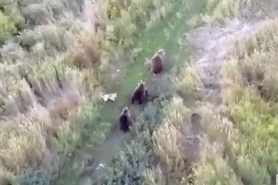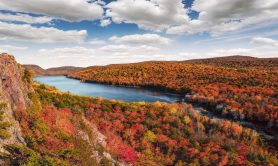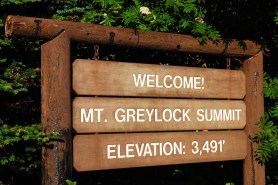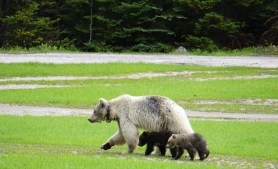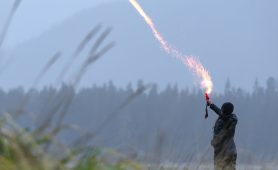

Northern Tanzania is a land of extremes—from the snow atop Kilimanjaro, Africa’s highest mountain, to the caustic, boiling waters of Lake Natron, and from the dramatic landscapes of the Great Rift Valley to the molten lava of Ol Doinyo Lengai, East Africa’s only active volcano. Here, you’ll find breeding grounds for more than a million flamingos, as well as the wild, wide, uncultivated plains where the Maasai tribe graze their cattle and sheep.
Videos by Outdoors with Bear Grylls
For active types who love the outdoors, this part of Tanzania has a lot to offer. Come trekking with me as I highlight some of my personal favorites.
Lake Natron and Fabulous Flamingos
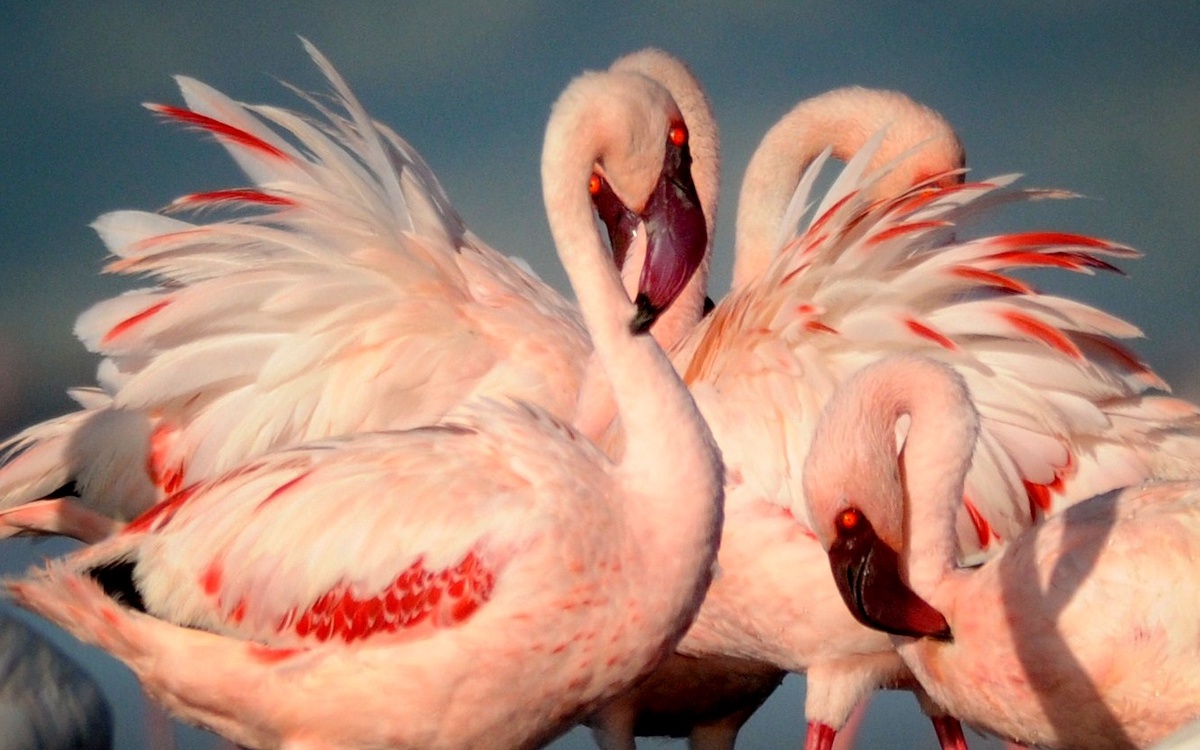
Sunset at Lake Natron is a magical time of day. The heat of the day starts to wane and the wind starts to die down. Lake Natron, just 10 feet deep but 13 miles wide, is the main breeding site in East Africa for 2.5 million lesser flamingos. In fact 75% of the world’s population of these birds are born here, and it’s the algae, cyanobacteria, and other salt-loving organisms that they feed on that gives them their pinkish color.
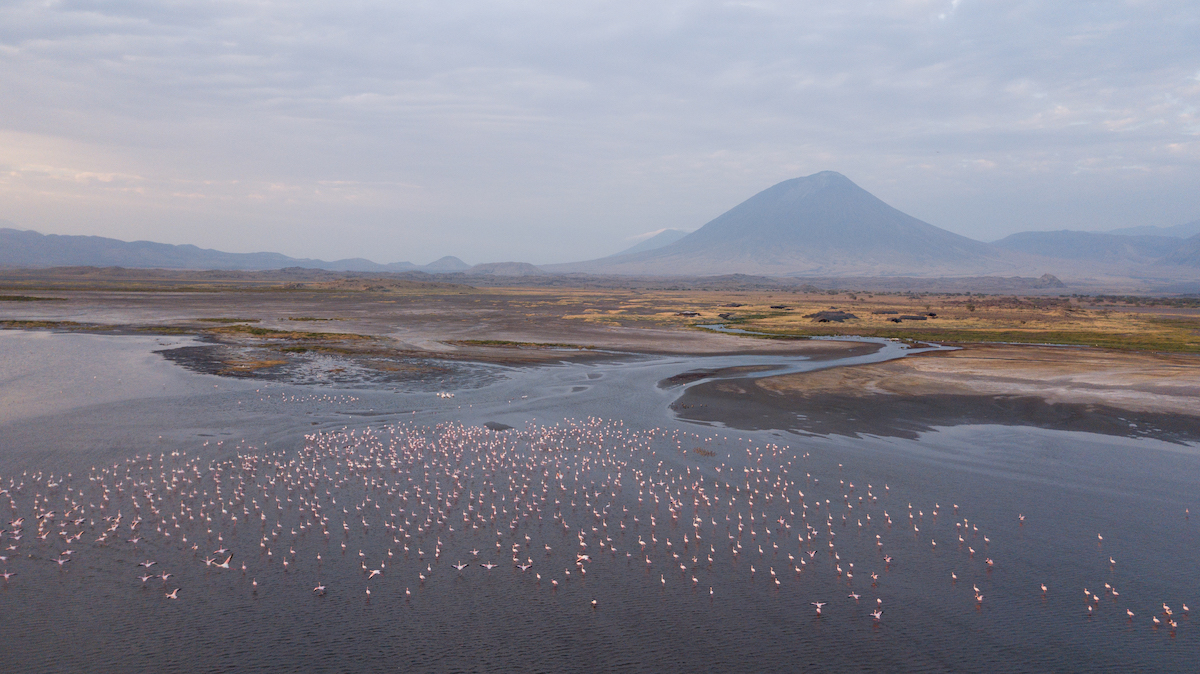
Walking out across the mud flats, as the sun sinks closer to the horizon, the lake is a flurry of activity. The flamingos tramp through the shallows. Heads down, bills underwater, stirring up organic matter with their webbed feet. Swinging their heads back and forth, filter-feeding as they let the water flow through their bills. When the flamingos tire of feeding, they march in groups, heads held high and in tight formation. The very best time of day to see these magnificent birds is at sunset, when the heat is not so ferocious, and it’s just a short walk from Lake Natron Camp.
Ancient Hominid Footprints
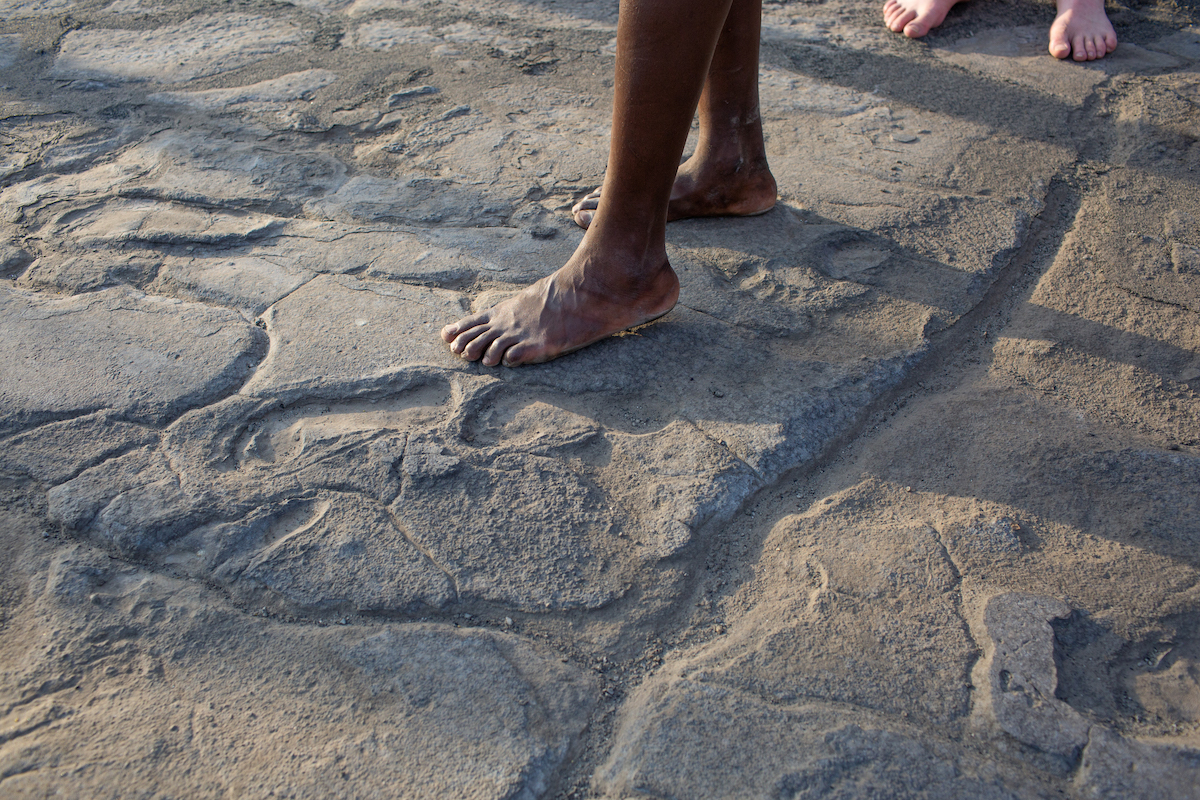
Not far from the southern shores of Lake Natron, a half-hour walk from Lake Natron Camp, is a cluster of spectacularly rare and well-preserved, fossilized hominid footprints. More than 400 footprints in total crisscross the mudflats, covering an area slightly larger than a tennis court. It’s an ancient treasure trove left here in the mud, somewhere between 5,000 and 19,000 years ago. No other site in Africa has so many ancient Homo sapien footprints.
Some of the footprints appear to have been left by people running through fresh volcanic mud and ash. Others seem to be from a group of around a dozen people, mostly women and children, who were traveling across the mudflats together. One set of prints is so well preserved that it’s possible to tell that they were probably left by a person walking with a broken big toe. The mud recorded it all—drying out within hours of the footprints being made, before they were buried in another layer of mud and ash, entombing them for millennia.
The ‘Mountain of God’

Lake Natron is backdropped by the magnificent Ol Doinyo Lengai, a 9,718-foot volcano, sacred to the Maasai and known to them as the “Mountain of God.” This is East Africa’s only active volcano, the only active carbonatite volcano in the world, and it’s probably the toughest day hike in all of the region.
The base of the mountain is about an hour’s drive from Lake Natron Camp, and the ascent takes somewhere between 4-6 hours (and another 3-4 hours down), depending on your level of fitness. This is a challenging ascent. It’s chilly, it’s dark, and it’s steep. The top third of the volcano has some slippery, rocky stretches, so you’ll need to be prepared to do some scrambling and maybe even some crawling on all fours. Once you reach the top, though, you’ll be rewarded with endless, unbelievable views. An overnight ascent of Ol Doinyo Lengai is an unforgettable experience.
The Footsteps of Mankind Trek

One of the highlights of this part of Tanzania is The Footsteps of Mankind trek, a three-day hike, tracing the millennia of evolution. Starting from those fossilized hominid footprints near Lake Natron Camp and finishing at Olduvai Gorge. Olduvai, known as the Cradle of Mankind, is one of the most important paleoanthropological sites in the world and home to evidence of some of our earliest ancestors. It was here, in the early 20th century, that archaeologist Dr. Louis Leakey uncovered some of the earliest hominid fossils, and the fossil-rich deposits here cover a time span from 2,100,000-15,000 years ago. It is certainly a window into the distant history of mankind. Passing through timeless landscapes that span millions years of geography, the trail follows the migration routes the Maasai herdsmen and their livestock use as they move their herds to fresh pastures.
Hiking roughly 7 miles a day, you pass through traditional Maasai lands and witness untouched Maasai culture. Immersed in places and sights that are far off the beaten track, but with a comfortable campsite to look forward to at the end of the day, this is an absolute adventure. Passing local villages, encircled by fences made from the branches of thorn trees, you’ll have the opportunity to stop and chat with local people. There’s wildlife to be seen—gazelles, zebras, golden jackals, and more—as well as some great bird spotting, including nesting sites of the amazing Rüppell’s vultures.
Other Hikes in the Area

There are several other hikes you can take in the area of Lake Natron and Ol Doinyo Lengai, if an ascent of the volcano or a multi-day trek isn’t for you. A great alternative is a full-day Rift Valley Hike, an adventurous hike where you leave camp before dawn and start at the base of the Rift Valley wall, which you scale on foot, ascending close to Ngare Sero Gorge in time for sunrise. Another possibility is a full-day hike (4-6 hours) deep into the Ngare Sero Gorge to the source of the river. If all that is too much to contemplate, then a 2-3-hour walk into the gorge to see the spectacular waterfalls is a more laid-back option. The scenery is a unique blend of arid volcanic rocks and lush tropical palms, and a picnic completes the experience.
More Tips for Trekking in Tanzania
With so much adventure at your fingertips, trekking in northern Tanzania should be on the travel bucket list for any active traveler. Keep these additional tips in mind.
Where to Stay
With the lake right on your doorstep and a natural spring to swim in, Lake Natron Camp is a unique eco-camp, designed so that if it were dismantled, there would be no trace of it and the landscape could be totally restored. With composting toilets and water coming from a natural spring (with an osmosis filter system making it safe for drinking), the camp is very conscious of preserving the environment in which it is located.
How to Travel in Northern Tanzania
Mahlatini prepared an epic Northern Tanzania itinerary for my travels that included hiking, climbing, and trekking in the Lake Natron area. You can follow my itinerary above or ask them to customize one for you, including everything on your wish list—from safaris to off-the-beaten-track experiences and incredible adventures.



